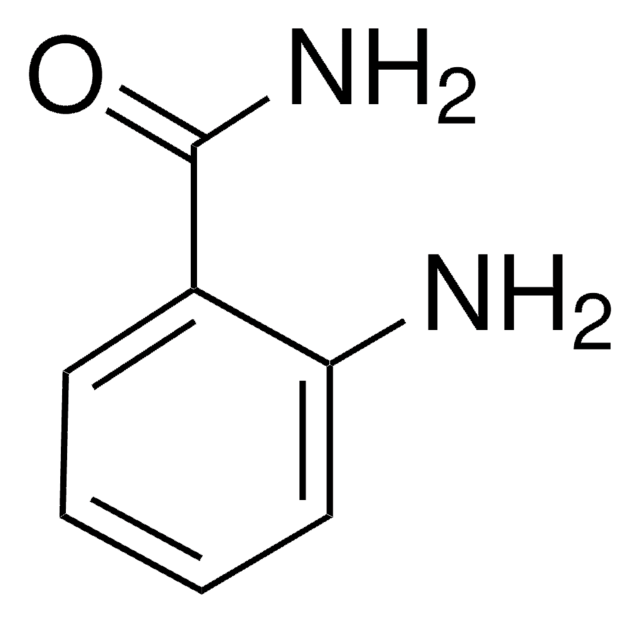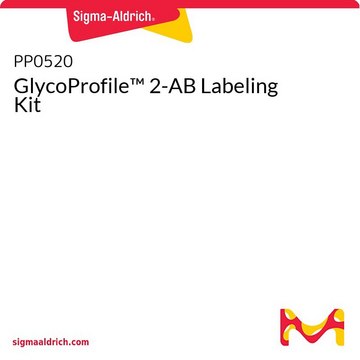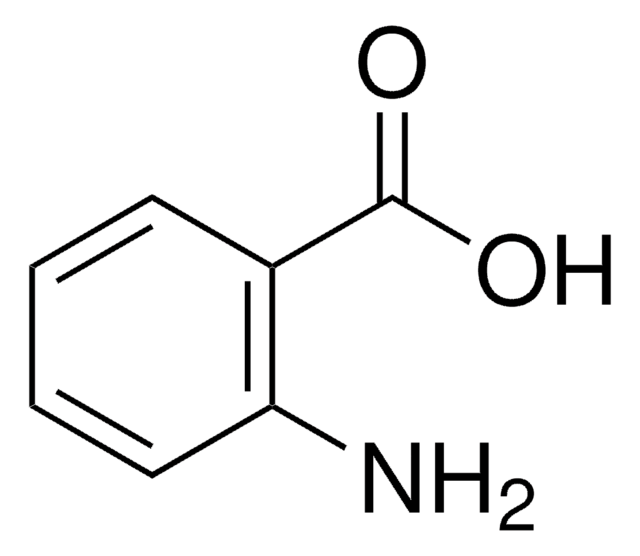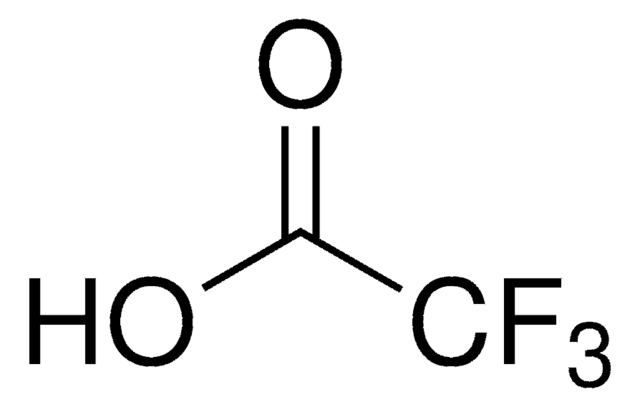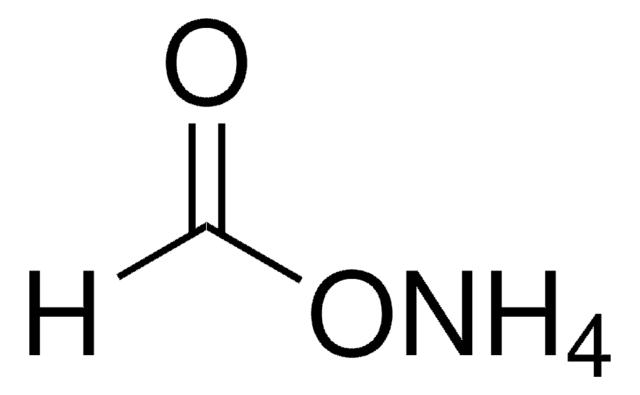Key Documents
76884
Anthranilamide
matrix substance for MALDI-MS, ≥99.0% (HPLC)
Synonim(y):
2-AB, 2-Aminobenzamide, Anthranilic acid amide
About This Item
Polecane produkty
klasa czystości
matrix substance for MALDI-MS
Poziom jakości
Próba
≥99% (NT)
≥99.0% (HPLC)
Postać
crystals
metody
MALDI-MS: suitable
mp
111-113 °C (lit.)
ślady kationów
Ba: ≤5 mg/kg
Ca: ≤5 mg/kg
Cd: ≤5 mg/kg
Co: ≤5 mg/kg
Cr: ≤5 mg/kg
Cu: ≤5 mg/kg
Fe: ≤30 mg/kg
K: ≤50 mg/kg
Mg: ≤5 mg/kg
Mn: ≤5 mg/kg
Na: ≤150 mg/kg
Ni: ≤5 mg/kg
Pb: ≤5 mg/kg
Zn: ≤5 mg/kg
ciąg SMILES
NC(=O)c1ccccc1N
InChI
1S/C7H8N2O/c8-6-4-2-1-3-5(6)7(9)10/h1-4H,8H2,(H2,9,10)
Klucz InChI
PXBFMLJZNCDSMP-UHFFFAOYSA-N
Szukasz podobnych produktów? Odwiedź Przewodnik dotyczący porównywania produktów
Zastosowanie
Komentarz do analizy
produkt powiązany
Hasło ostrzegawcze
Warning
Zwroty wskazujące rodzaj zagrożenia
Zwroty wskazujące środki ostrożności
Klasyfikacja zagrożeń
Eye Irrit. 2
Kod klasy składowania
11 - Combustible Solids
Klasa zagrożenia wodnego (WGK)
WGK 1
Temperatura zapłonu (°F)
>365.0 °F
Temperatura zapłonu (°C)
> 185 °C
Wybierz jedną z najnowszych wersji:
Certyfikaty analizy (CoA)
Nie widzisz odpowiedniej wersji?
Jeśli potrzebujesz konkretnej wersji, możesz wyszukać konkretny certyfikat według numeru partii lub serii.
Masz już ten produkt?
Dokumenty związane z niedawno zakupionymi produktami zostały zamieszczone w Bibliotece dokumentów.
Klienci oglądali również te produkty
Nasz zespół naukowców ma doświadczenie we wszystkich obszarach badań, w tym w naukach przyrodniczych, materiałoznawstwie, syntezie chemicznej, chromatografii, analityce i wielu innych dziedzinach.
Skontaktuj się z zespołem ds. pomocy technicznej